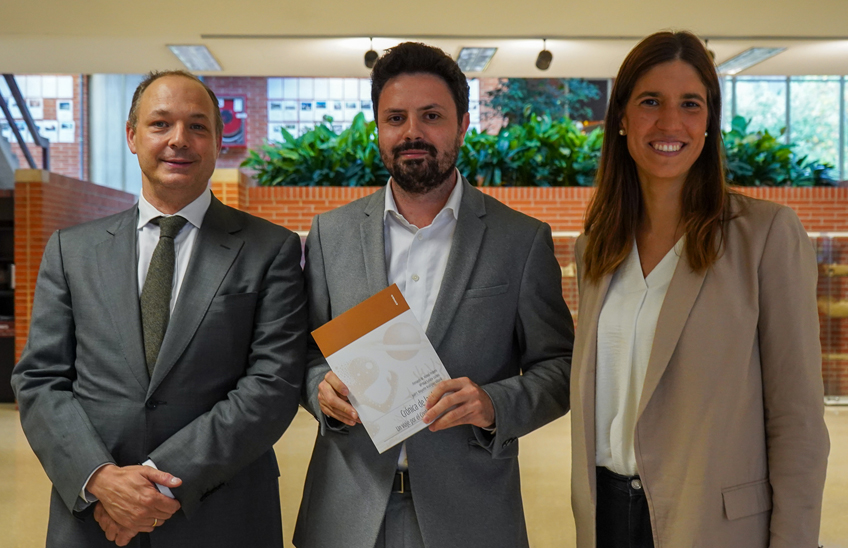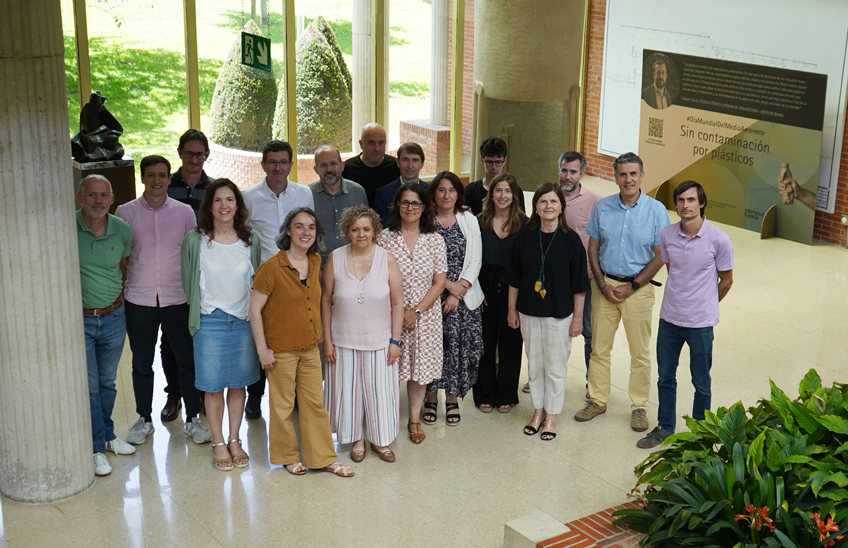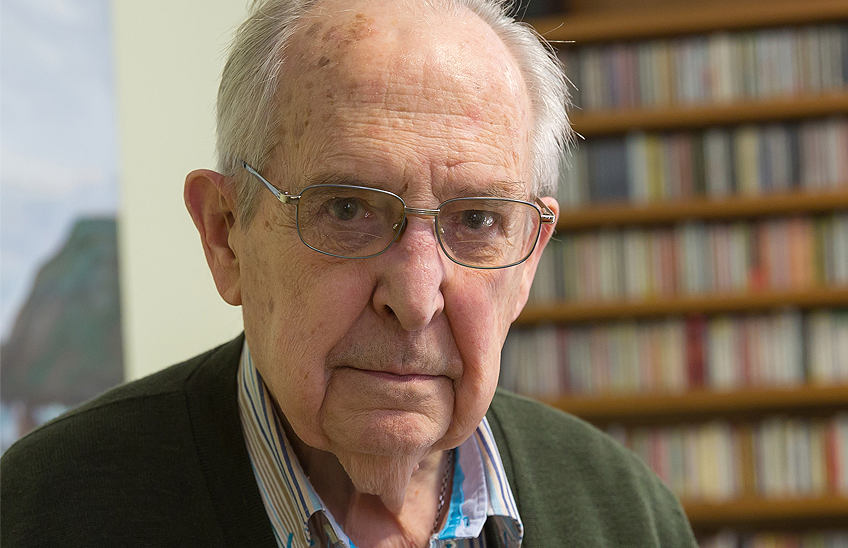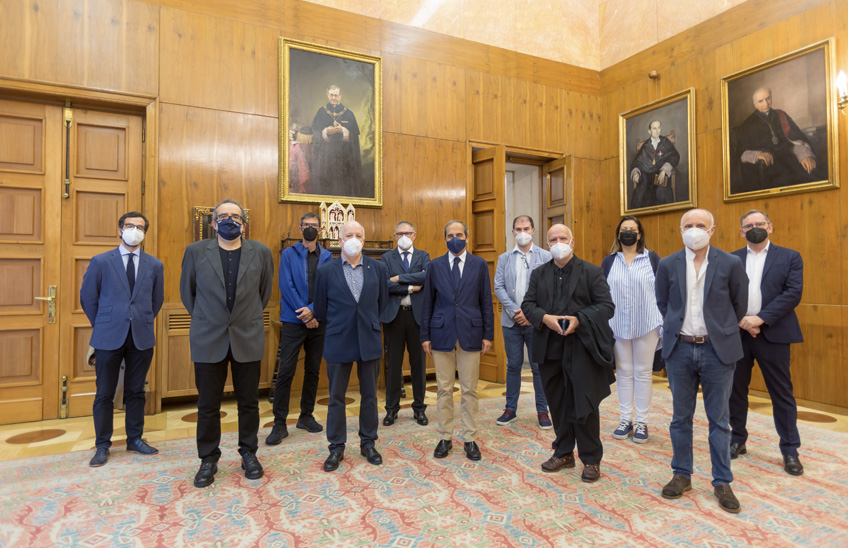Research in public education centers in Navarra confirms that ventilation has reduced CO2 levels by one fifth
A research group from the University of Navarra which conducted monitoring of classrooms before and during the pandemic found that the temperature dropped 2°C in winter
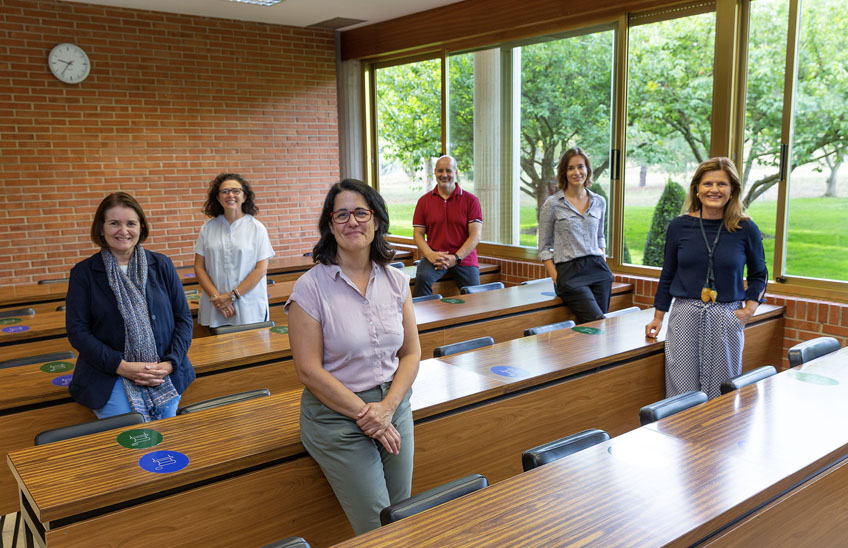
PhotoManuel Castells/From left to right, some of the project researchers: Purificación González, Dolores López, Aurora Monge, Alberto Arriazu, Ainhoa Arriazu and Ana Sáchez-Ostiz.
21 | 09 | 2021
The Research group SAVIArquitectura of the University of Navarra has found that frequent ventilation measures taken in classrooms during COVID-19 have reduced indoor CO2 levels by one-fifth, reaching parameters of 1,100 ppm, which prior to the pandemic could have been more than 5,000 ppm. The study is carried out with funding from the Regional Government of Navarra received under the call for research and knowledge transfer projects carried out in educational centers.
The research team, led by Professor Aurora Monge from the School of Architecture including Ana Sánchez-Ostiz, Dolores López, Ainhoa Arriazu, Maira Bes, Purificación González, Nerea Martín, Jorge San Miguel, Alberto Arriazu and Sara Dorregaray, began studying energy efficiency in nine public secondary and high schools in Pamplona prior to the pandemic. In one of the institutes, IES Navarro Villoslada, they also monitored the temperature, the relative humidity and the quality of the indoor air.
In the 20-21 academic year, monitoring was carried out in three more centers in Pamplona, Tudela and Elizondo. "This allowed us to have the measurements prior to the pandemic as a reference and to compare them directly with those followed during the pandemic, in order to assess the usefulness of the measures proposed by the Department of Education for the last academic year in the schools of Region of Navarre", explains the project's principal researcher, Aurora Monge.
As detailed by the Professor in the School of Architecture, in the first center that was monitored, despite a 30% increase in heating consumption, the average temperature barely reached 19ºC (before the pandemic the average temperature was 21ºC) with a minimum of 15ºC. Something already observed in general in schools, since students had been allowed to wear coats to class.” Therefore, The Department of Education has explicitly prioritized face-to-face teaching in times of the pandemic over other criteria of comfort or energy efficiency, so that schools have remained open throughout the school year in Spain, unlike many other European countries.
The usefulness of "heat recuperators"
In cold climates or during the months where the temperature was lower than 12 ºC, the authors of the study indicate that a way to ensure balance between ventilation and adequate temperatures is mechanical ventilation with heat recovery. “Furthermore”, added Professor Ana Sánchez-Ostiz, author of the study and director of the Masters in Environmental Design and Management of Buildings (MDGAE) of the University of Navarra, “the study has shown that it is essential, for this coming school year, for teachers to remain committed to maintaining natural ventilation patterns".
“The Next Generation Funds is an opportunity to undertake the rehabilitation of the thermal envelope, implement measures that favor natural and/or mechanical ventilation with heat recovery systems, have adequate heating systems and renewable energy production -especially in older schools- and act on the urban school environment, so as to allow adequate ventilation, avoiding pollution and external noise". The pandemic has taught us if we want to ensure in-person classroom teaching, air quality in classrooms has to be managed," concludes Ana Sánchez-Ostiz.

